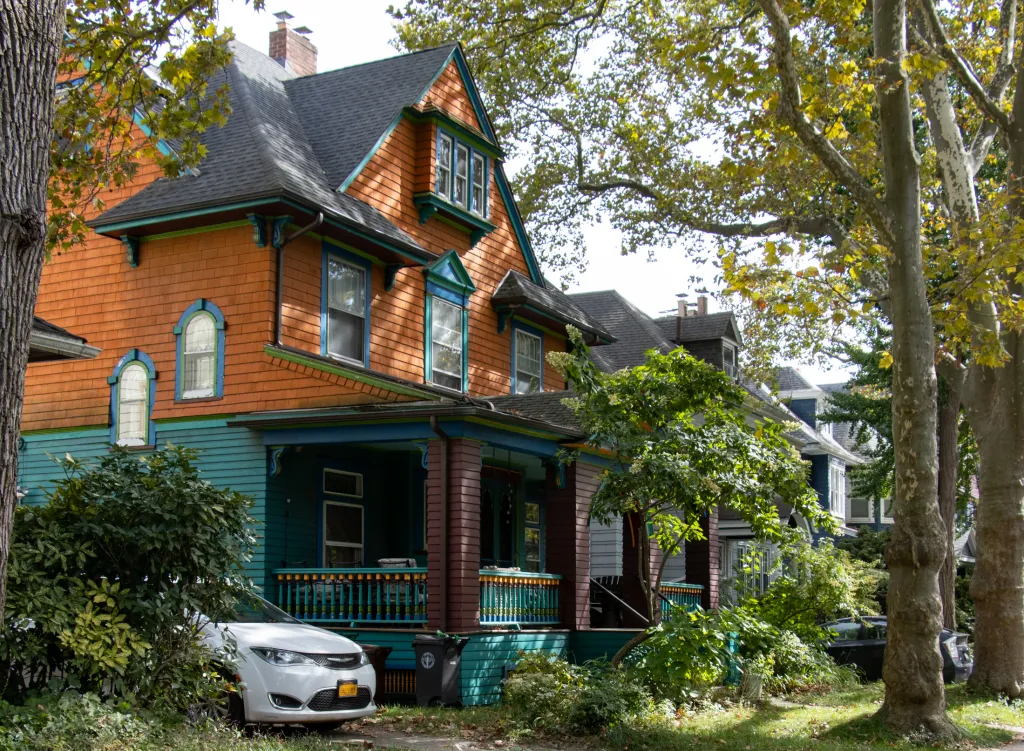Eminent Domain Spreads to Williamsburg Waterfront
How would you feel if you’d been smart enough to buy waterfront property in Williamsburg before Dan Doctoroff knew the difference between Bedford and Broadway only to have your property snatched away from you by the city? Probably something like the two groups of investors who are in the process of getting pushed out by…


 How would you feel if you’d been smart enough to buy waterfront property in Williamsburg before Dan Doctoroff knew the difference between Bedford and Broadway only to have your property snatched away from you by the city? Probably something like the two groups of investors who are in the process of getting pushed out by the forces of eminent domain to make way for a possible soccer and softball field. This time around, the city isn’t claiming blight; instead it’s invoking the concept of public good. The land, which is bounded by Kent Avenue, the East River, North 9th Street and North 10th Street in Williamsburg, is just to the north of the recently-opened East River State Park between North 8th and North 9th streets and lies at the southern end of the proposed Bushwick Inlet Park that the city’s had on the drawing boards for the past couple of years; the parcel represents phase 1 of the park project. The grand vision for the park extends north from North 9th Street about six blocks to the far side of the Bushwick Inlet. This is far from a done deal, though, according to The Real Deal, which first reported the ED action: Three land owners in the center of the footprint—TransGas, CitiStorage and the Greenpoint Monitor Museum—aren’t taking the city’s overtures lying down. “[The land] was donated and we are not giving it up,” said Janice Lauletta-Weinmann, president and co-founder of the Greenpoint Monitor Museum, told TRD. “It is a disgrace.” One remaining issue to be resolved in the North 9th Street case is price: Typically the city pays a token amount to the owners upfront and then litigates the final amount. The market value is probably somewhere between $100 and $200 per buildable square foot, according to Massey Knakal. It’ll be interesting to see what the final price is. Do you think this situation merits the use of eminent domain?
How would you feel if you’d been smart enough to buy waterfront property in Williamsburg before Dan Doctoroff knew the difference between Bedford and Broadway only to have your property snatched away from you by the city? Probably something like the two groups of investors who are in the process of getting pushed out by the forces of eminent domain to make way for a possible soccer and softball field. This time around, the city isn’t claiming blight; instead it’s invoking the concept of public good. The land, which is bounded by Kent Avenue, the East River, North 9th Street and North 10th Street in Williamsburg, is just to the north of the recently-opened East River State Park between North 8th and North 9th streets and lies at the southern end of the proposed Bushwick Inlet Park that the city’s had on the drawing boards for the past couple of years; the parcel represents phase 1 of the park project. The grand vision for the park extends north from North 9th Street about six blocks to the far side of the Bushwick Inlet. This is far from a done deal, though, according to The Real Deal, which first reported the ED action: Three land owners in the center of the footprint—TransGas, CitiStorage and the Greenpoint Monitor Museum—aren’t taking the city’s overtures lying down. “[The land] was donated and we are not giving it up,” said Janice Lauletta-Weinmann, president and co-founder of the Greenpoint Monitor Museum, told TRD. “It is a disgrace.” One remaining issue to be resolved in the North 9th Street case is price: Typically the city pays a token amount to the owners upfront and then litigates the final amount. The market value is probably somewhere between $100 and $200 per buildable square foot, according to Massey Knakal. It’ll be interesting to see what the final price is. Do you think this situation merits the use of eminent domain?
City Takes W’burg Waterfront Properties for Park [The Real Deal] GMAP





Fair enough, 2:43. This post could have been written in a more measured, less emotional voice, to be sure, and in retrospect we might have toned down the closing remark about price, but we stand by our original position that we don’t support the use of eminent domain in this case and doubt very much that the city will end up paying what these properties would currently fetch on the open market. All of which is not the same thing as being anti-park or pro-rich developer. Only time will tell, of course.
When I asked about caselaw I was, of course, asking for examples of partial condemnation = partial compensation. Of course if taking one wing of a building allows the other wing to still be used, then that might be appropriate. I understand the “law” involves more. In this case the U.S. constitution allows emminent domain, and many states have statutes outlining the process. While I am a lawyer, this is not my area of the law. I would be surprised, however, if prior to Kelo a property had to be blighted to be condemned. That makes no sense at all. Certainly parks, bridges, streets, schools, fire stations, etc, have been built on land which had a purpose prior to the condemnation. In this sense emminent domain is like taxation. The government takes something of yours in order to provide services and benefit to society as a large. Sucks (always in cases of taxes) if it is yours, but kind of hard to see how society could work without it. We could pay Farmer Brown 3 trillion dollars to build an interstate on her property, but then we wouldn’t have money for anything else. And as a public defender I have a certain degree of skepticism of the inherent wisdom of the neutral court, but somehow I think big corporations and developers which have some property they bought as a speculation taken from them for a park will do just fine.
Shoot I said I wasn’t going to think about this anymore.
I would love to hear back from Brownstoner. Do you still feel that this is an abuse of eminent domain? Do you think that your posting accurately reflects the story? I really think it could have been written in a way that expressed your opinion without coloring the description of the city’s proposal.
I rent. It’s better.
Lawyer Chick
“Up until a recent Supreme Court decision, municipalities wanting to use ED had to prove blight.” – not true
“Since Kelo v. New London in 2000, the court approved this “public good” business.” – not true ‘public good has always been standard
“no one will shed a tear when evil developers are being deprived of their property rights (w/out just compensation, which I think is the point here).” – Not True by consititutional definition, ED REQUIRES just compensation
“what happens when the city decides that middle-class apartments aren’t “good enough” and we should kick people out and build luxury condominiums instead? (That’s pretty much what happened in Kelo, btw.)” – Not true the Kelo plan involved a Conference center, hotel, retail, office space, public park, research center and small amount of housing
“They can justify it by saying that the public good being done is an increased tax base, as well as jobs for all those poor schlepps cleaning the rich peoples’ apartments.” – Not true, they can “justify” it anyway they want but a Court still has to hear it and certainly Kelo doesnt articulate that such a taking would meet there balancing test, not to mention that State Law can be more restrictive.
Again if you are a Lawyer, I recommend that your next CLE credits be dedicated to some Real Property and Constitutional Law before you post misinformation again.
Talking out of your ass at 1:09:
“Proposed disposition of property “to increase tax and other revenues” held to qualify as “public use” within meaning of takings clause of Federal Constitution’s Fifth Amendment.”
Kelo v. New London, 545 U.S. 469.
-Lawyer chick
I’ve actually been involved in some ED work (used to work for the City/State). In general, property owners whose property gets taken in ED get MORE than they would have on the open market, not less. This is because the government not only has to compensate the owners for the land, but also for “fixtures” and they also have to give a stipend for moving expenses – both things that would not be covered in a market transaction. So I really thing that the inference that the property owners would get less than they would on the open market is off-base. The courts have been pretty consistent at making sure that doesn’t happen.
12:12, what are you smoking?
I’m 315 pages into the Power Brioker and it is a gripping read. Surely not perfect but one of the best and most thoroughly researched nonfiction books I’ve ever read.
As for eminent domain, this is certainly an appropriate candidate for it.
Under Kelo, literally ANY use is appropriate so long as stamped with approval by the correct state/local powers that be, and the owner is compensated. However, this instance actually fits the traditional meaning of ED.
To 12:54
A scenario similar to the one described by 12:26 was experienced by property owners abutting the west side highway (south of 14th st) a few years ago.
While I am unsure of the final outcome, the city position was to pay for a market sf price for ONLY the portion that was taken. Not taking into account the actual impact on the properties or residents of those properties.
Caselaw? I am not sure if you are a lawyer, but caselaw is only one source of the law and is not always dispositive. One needs to look at the totality of the facts surrounding the issue and lately, ED is being utilized in a manner that we should all be concerned with.
While you may be a believer in the “neutral” elected court official and the wisdom of the courts, I am not.